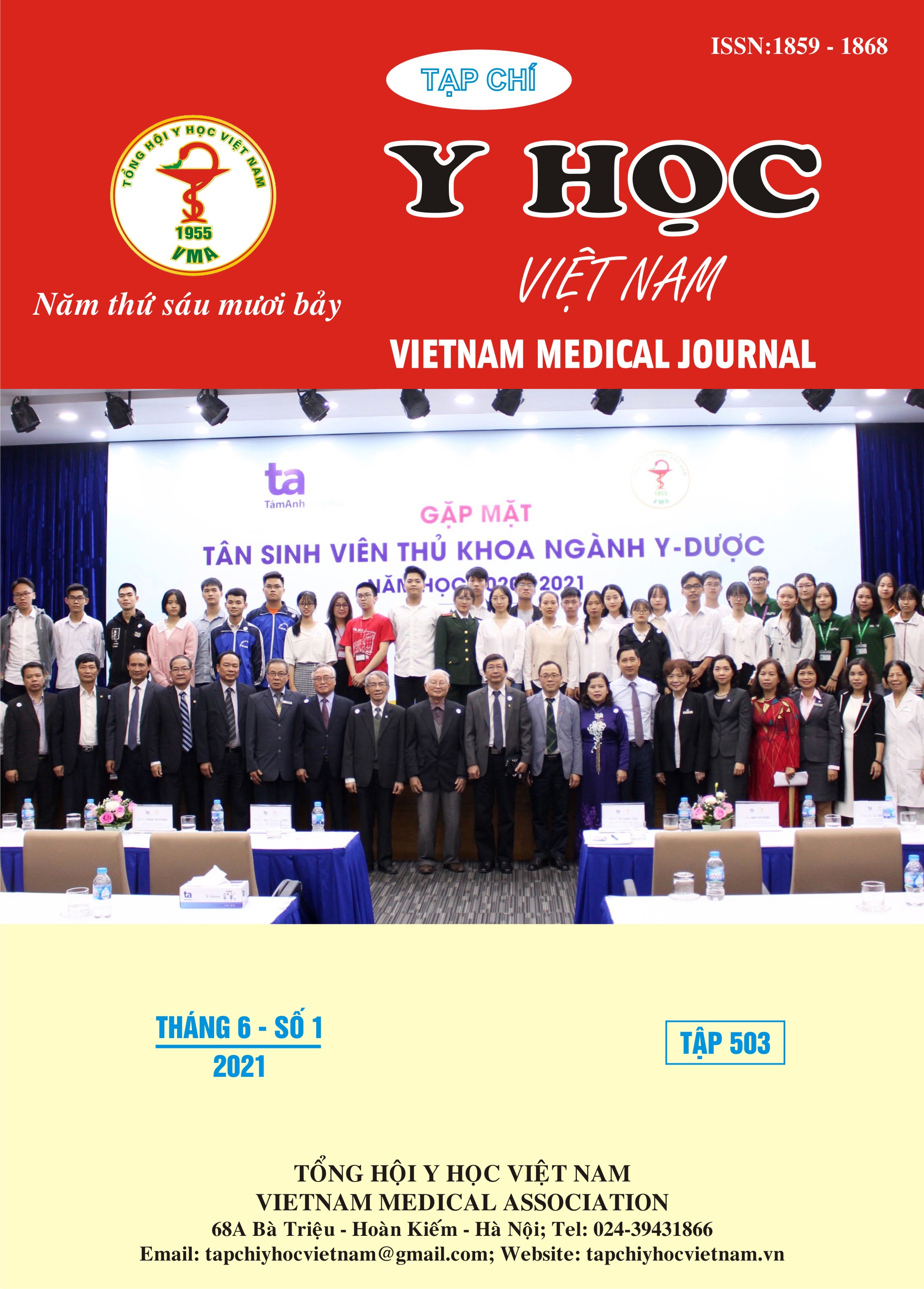CHANGE OF APRI AFTER SUSTAINED VIROLOGICAL RESPONSE IN CHRONIC HEPATITIS C PATIENTS TREATED WITH DIRECT-ACTING ANTIVIRAL AGENTS
Main Article Content
Abstract
Objective: To investigate the effectiveness of direct-acting antiviral agents (DAA) in improving liver fibrosis based on AST to Platelet Ratio Index (APRI) after achieving sustained virological response in patients with chronic hepatitis C virus (HCV). Patients and methods: We conducted a retrospective cross-sectional study on medical records of outpatients with chronic hepatitis C virus at Hepatitis clinic, University Medical Center of Ho Chi Minh City from January 2018 to December 2019. Patients were treated with 3-month DAA regimens. Clinical and laboratory data were collected before treatment, at 3 months, 6 months and 12 months after the end of treatment. The degree of liver fibrosis was assessed based on APRI. Results: Among 184 eligible patients, 113 (61.4%) were female. The mean age of patients was 57.1 ± 13.4. There were 96/184 (52.2%) without cirrhosis. In patients without cirrhosis, APRI was changed significantly at 6 months after the end of treatment compared to baseline (0.71; 0.32; respectively, p = 0.012). There was no statistically significant difference between the 12-month APRI and 6-month APRI after the end of treatment (0.32; 0.31; respectively, p = 0.385). In cirrhotic patients, APRI decreased statistically significantly at all ranges at 6 months after the end of treatment compared to those at baseline (1.13; 0.41; respectively, p < 0.001). Conclusion: APRI was changed significantly in patients with HCV at 6 months after the end of DAA treatment. Therefore, patients with HCV should receive early DAA therapy to limit progression of chronic liver disease.
Article Details
Keywords
Cirrhosis, APRI, chronic hepatitis C virus
References
2. Ghany MG, Marks KM, Morgan TR et al. Hepatitis C Guidance 2019 Update: AASLD-IDSA Recommendations for Testing, Managing, and Treating Hepatitis C Virus Infection. Hepatology. 2019.
3. Hà Vũ, Bùi Hữu Hoàng. Giá trị của chỉ số APRI và FIB-4 trong tiên đoán giãn tĩnh mạch thực quản ở bệnh nhân xơ gan. Tạp chí Y Học Thành phố Hồ Chí Minh. 2015; 19(1):97-102. 3
4. Chou R, Wasson N. Blood tests to diagnose fibrosis or cirrhosis in patients with chronic hepatitis C virus infection: A systematic review. Annals of Internal Medicine. 2013; 158:807–820.
5. Bachofner JA, Valli PV, Kröger A et al. Direct antiviral agent treatment of chronic hepatitis C results in rapid regression of transient elastography and fibrosis markers fibrosis-4 score and aspartate aminotransferase-platelet ratio index. Liver International. 2017; 37:369–376.
6. Anca L, Cristina P, Luciana N et al. Dynamics of APRI and FIB‑4 in HCV cirrhotic patients who achieved SVR after DAA therapy. Experimental and Therapeutic Medicine. 2021; 21(1):99.
7. European Association for the Study of the Liver. EASL recommendations on treatment of hepatitis C: Final update of the series. Journal of Hepatology. 2020; 73 (5): 1170 – 1218.
8. Tamaki N, Kurosaki M, Tanaka K et al. Noninvasive estimation of fibrosis progression overtime using the FIB-4 index in chronic hepatitis C. Journal of Viral Hepatitis. 2013; 20:72–76.


